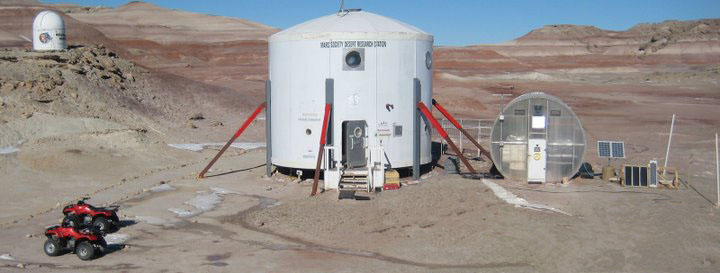
The planet Mars has been in the news a lot in recent years. Several countries have sent probes and rovers (even a helicopter) to explore Mars. Humans have not walked on Mars yet and that “first step” is a number of years away.

Mars has exerted a magic pull on our minds and imaginations. I don’t remember which came first. It was either Orson Wells’ radio production of The War of the Worlds or it was the Mars stories of Edgar Rice Burroughs, but somewhere there I got caught up in the romance of Mars.
Now H.G. Wells’ story of The War of the Worlds is rather grim and not very romantic. The Mars stories of John Carter and his various Martian relatives are high adventure in the most classic sense. I recommend all budding astronauts and astronomers to consume as many of the books as you can stand.
For the true Mars enthusiast, what options are there beyond getting lost in adventure stories? Well, if you are in primary or secondary school, NASA offers a number of virtual experiences. These are carefully designed learning experiences that simulate actual research activities on Mars done through Internet-based resources. See the links below for details of what’s currently being offered.
Recently, I became aware of “analog Mars experiences.” Now, as denizens of Second Life, we are familiar with virtual activities using our digital avatars. It took me a few minutes to connect with the idea of “analog.” My avatar is digital. Ah! My real life, flesh and blood, person is analog! So, an analog Mars experience must mean I go someplace and engage in a simulation. Sort of like cosplay for scientists.

That’s what it is. There are many locations around our Earth that are similar to the surface of Mars. These are Mars analogs. There are Mars research simulations in the high deserts, arctic tundras and even underwater. Review the links below for details. These simulations are not tourist destinations. They are not a trip to near-space with your favorite billionaire for which you buy a ticket. These are serious endeavors that seek to study how humans would live and conduct scientific research in the Martian environment. To participate, you must apply and be accepted. You need to offer some scientific skills and be able to fit into the research activities that are planned. All in all, it sounds pretty cool to me.
Let me know if you find an adventure on Mars.
Resources
- The John Carter of Mars Collection Kindle Edition, Edgar Rice Burroughs. The first three books in the Mars series. Cost – $0.99
- The Barsoom Collection : Complete Kindle Edition, Edgar Rice Burroughs. All eleven books in the Mars series. Cost $3.99
Virtual Classroom Activities
- Challenger Center virtual missions, NASA.
- STEM Resources, NASA
- Space Center – Houston virtual missions, NASA.
- Explore 3D map of the actual Mars surface as recorded by the Curiosity rover, NASA.
Analog Mars Missions
- You Don’t Need a Spaceship to Grow ‘Weird Little’ Martian Radishes, Sarah Scoles, New York Times,
December 28, 2021. - What is a Mars analog habitat?, Wikipedia.
- Analog Mars Projects at the Mars Desert Research Station, sponsored by the Mars Society (Wikipedia article).
- NASA recruiting for simulated Mars mission, NASA.
Photo Credits
- Princess of Mars, public domain, Wikimedia Commons
- Mars Desert Research Station campus, Bandgirl807, CC BY 3.0, Wikimedia Commons.
 |
| Visits: 21 |
